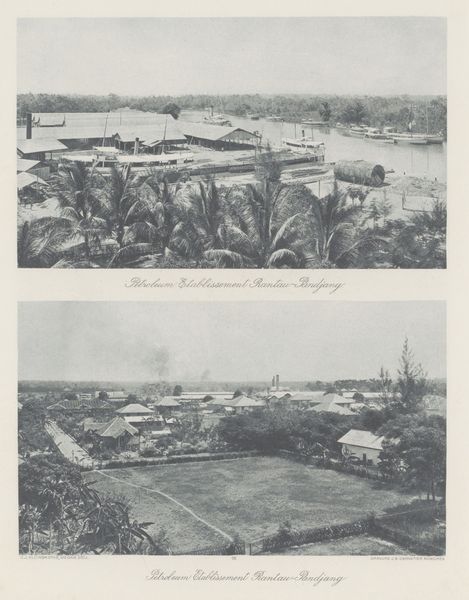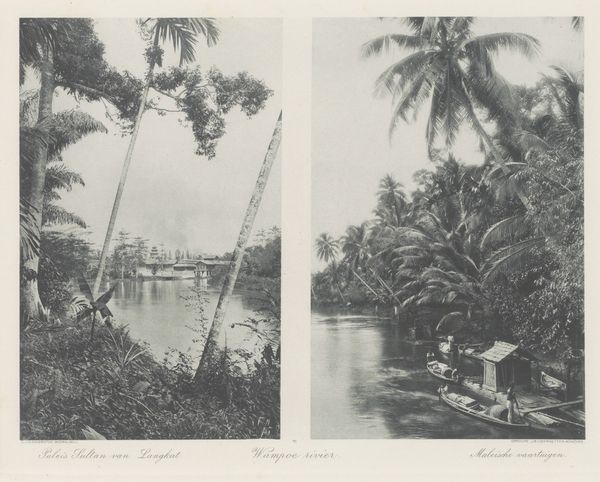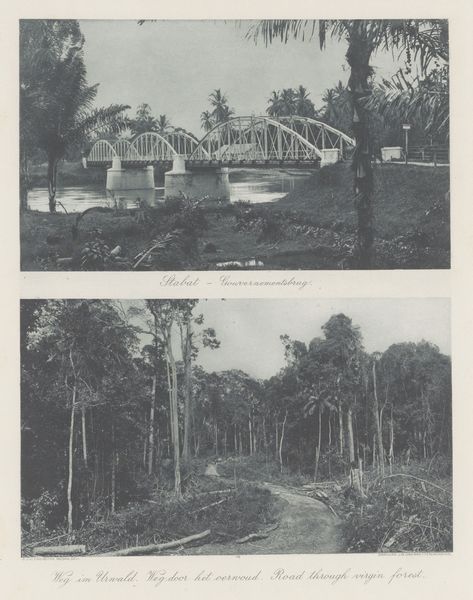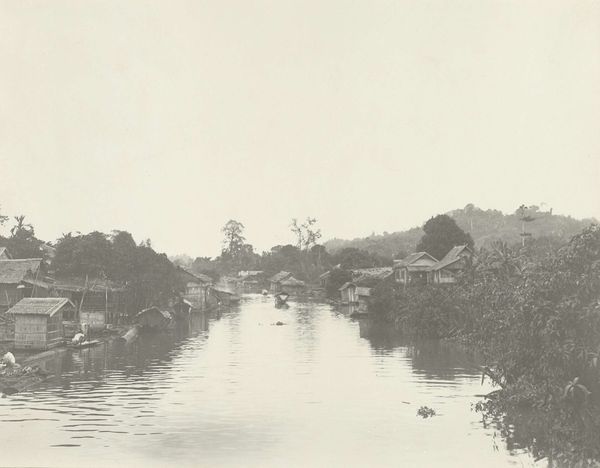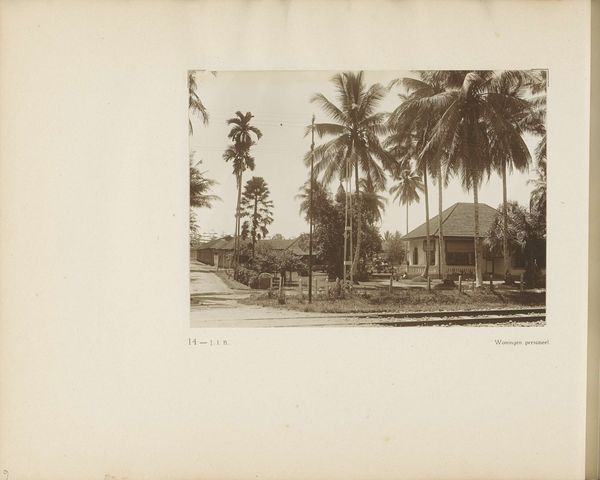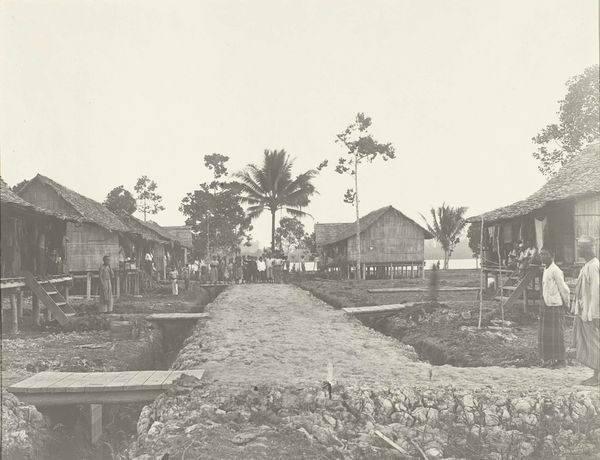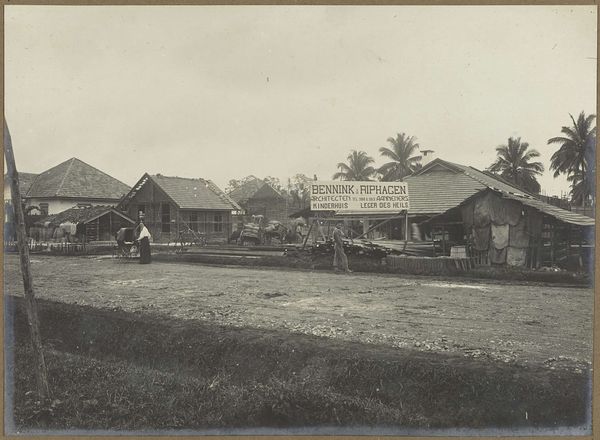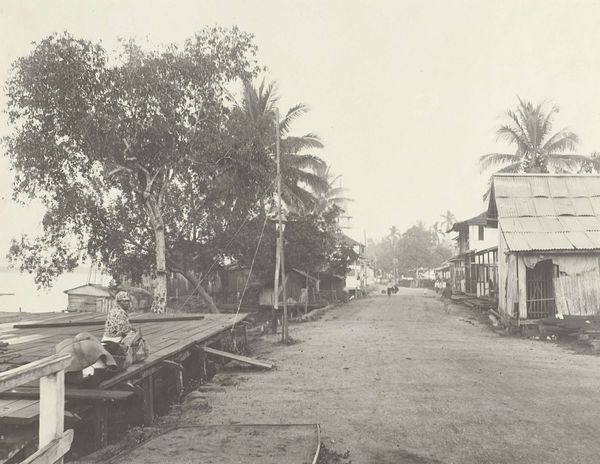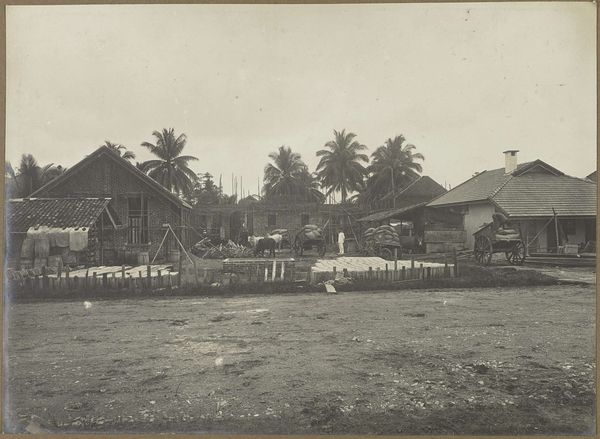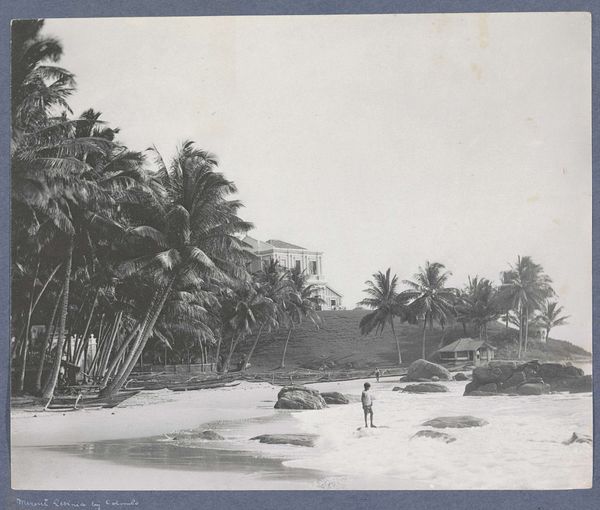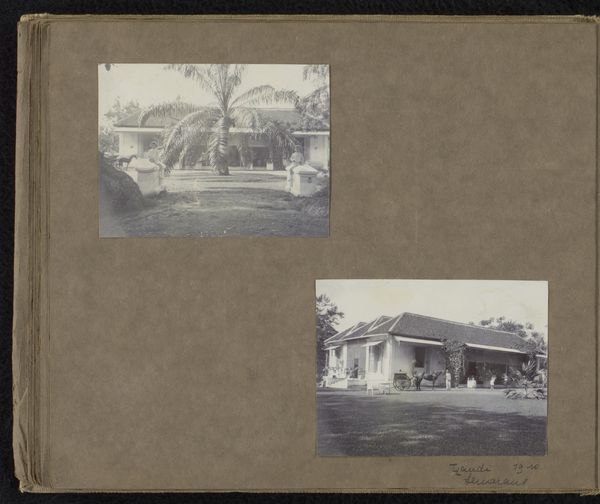
Spoorwegemplacement van Belawan (boven) en gezicht op Labuhan aan de Deli (onder) before 1898
0:00
0:00
carljkleingrothe
Rijksmuseum
print, photography
# print
#
landscape
#
river
#
photography
#
orientalism
#
cityscape
Dimensions: height 126 mm, width 219 mm, height 129 mm, width 219 mm
Copyright: Rijks Museum: Open Domain
Curator: This photograph, taken before 1898 by Carl J. Kleingrothe, is titled "Spoorwegemplacement van Belawan (boven) en gezicht op Labuhan aan de Deli (onder)," which translates to "Railway yard of Belawan (above) and view of Labuhan on the Deli (below)." It's currently held in the Rijksmuseum. Editor: It looks almost like two different worlds stacked on top of each other, doesn't it? The rigid lines of the railway above, versus the serene flow of the river below. Feels like a commentary on progress versus nature, even back then. Curator: It's more complex than that. Kleingrothe’s photography, falling under the umbrella of Orientalism, documented the colonial project. It shows the infrastructure built by Dutch colonizers alongside existing communities, highlighting both technological advancement and the transformation of landscapes. Editor: Right, right, the whole 'civilizing mission' narrative. But look closer. The bottom half, that river scene, it has this…dreamy quality. Like time moves differently there. And that little sailboat heading down the river looks to be quite happily ignoring whatever "progress" is being made above it. Curator: Indeed, there is inherent tension in the images, consciously or unconsciously captured by the artist. The railway station symbolizes colonial authority and economic exploitation, essential for resource extraction and control, contrasting sharply with the traditional life along the Deli River. Editor: I'm still drawn to the light in the river scene; how it dances on the water, reflecting off those simple homes. It evokes a feeling of resilience, wouldn't you say? Even in the face of something as imposing as that railway. There is a sense of timelessness to the water. Curator: Precisely. This work gives us a complex portrait, offering a glimpse into the societal restructuring. Through this double image, we can understand the mechanisms and implications of colonialism and modernity upon a pre-existing landscape and culture. Editor: It really makes you wonder what those people thought back then looking at a strange train, something alien entering into their peaceful daily lives. It almost looks like there are folks stood on the platform observing something beyond their realm of imagination, or maybe just eager to start a journey. Curator: A single print, divided in two. This forces a confrontation to reflect deeply on historical narratives that continue to ripple into the present. Editor: You know, sometimes the quietest pictures scream the loudest, like echoes through time, maybe there's even a little poetry within.
Comments
No comments
Be the first to comment and join the conversation on the ultimate creative platform.
